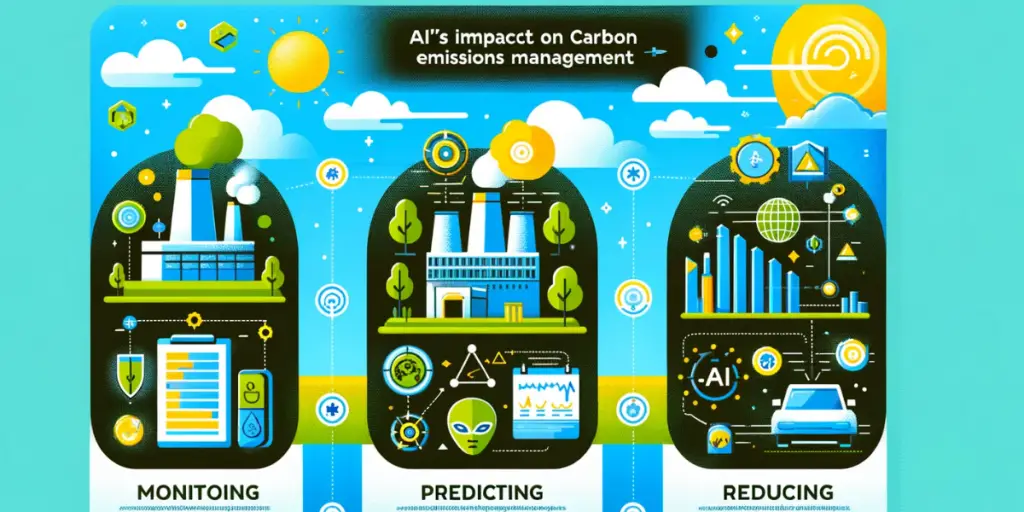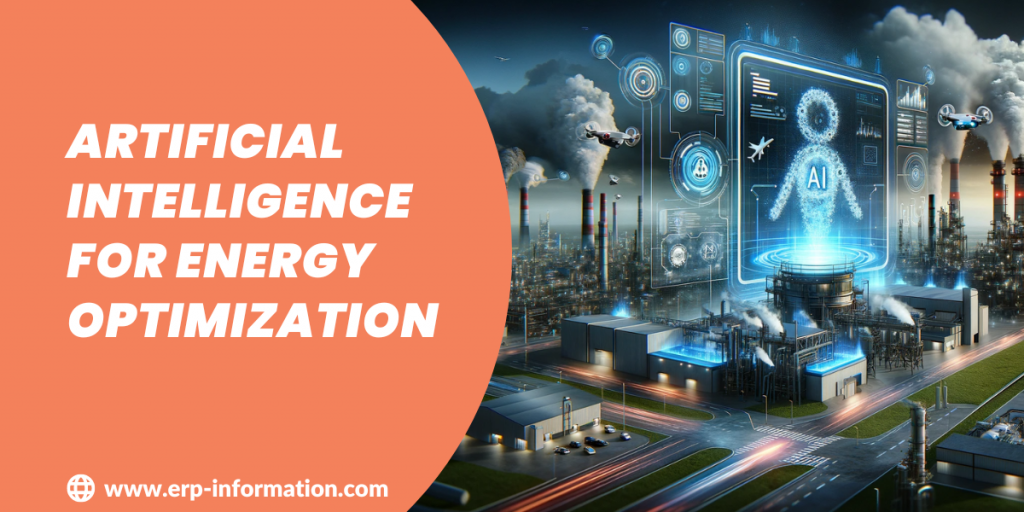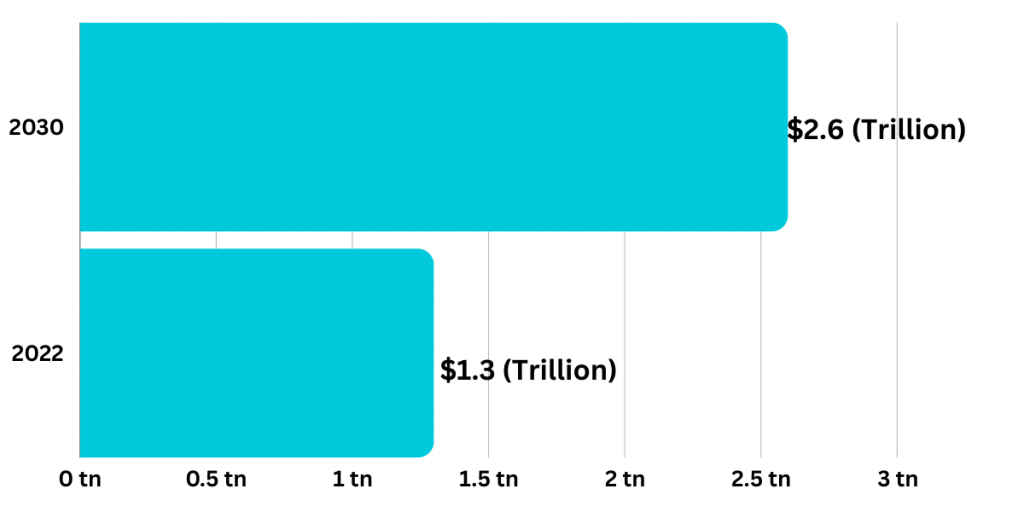AI-driven solutions optimize energy consumption, predict demand, and enhance the efficiency of energy systems, contributing to overall carbon reduction. A recent survey by BCG highlights a promising consensus among decision-making CEOs.
This post explores how Artificial Intelligence revolutionizes energy optimization. You can discover AI’s transformative role in enhancing efficiency and sustainability, and reshaping the future of energy management.
Overview of AI for Energy Optimization
According to the 2022 Climate AI Survey, a staggering 87% of CEOs believe that AI is indispensable in the fight against climate change. The potential of AI extends beyond mere recognition, with its capacity to predict extreme weather conditions and offer decision-support tools for implementing effective responses.
As the urgency to address climate change intensifies, the statistics paint a stark reality. Current global greenhouse gas (GHG) emissions stand at approximately 53 gigatons of carbon dioxide equivalent (CO2e), according to the Carbon Disclosure Project.
To adhere to the 1.5°C temperature increase limit outlined in the 2016 Paris Agreement, a reduction of 50% in emissions by the end of this decade is imperative, as emphasized by the Science-Based Targets Initiative.
The BCG survey underscores that applying AI could lead to an impressive overall emissions reduction of 5% to 10%, equivalent to 2.6 to 5.3 gigatons of CO2e if implemented across all sectors. This is a substantial contribution toward meeting emission reduction goals.
Furthermore, BCG’s studies shed light on the broader economic impact of integrating AI into corporate sustainability efforts. The projected overall impact is substantial, with an estimated value ranging from $1.3 trillion to $2.6 trillion by 2030.
This value is derived from the synergistic benefits of additional revenues and cost savings, underscoring the economic viability of AI-driven sustainability initiatives.
How does AI Work in Carbon Emissions?

Monitoring Emissions
- AI utilizes data engineering to automatically track emissions across the entire carbon footprint.
- Collects data from various sources such as operations, corporate travel, IT equipment, and the entire value chain.
- Exploits new data sources like satellites to enhance monitoring capabilities.
- Applies intelligence to generate approximations for missing data and estimates the certainty of results.
Predicting Emissions
- Predictive AI forecasts future emissions considering current reduction efforts, new methodologies, and future demand.
- Enables companies to set, adjust, and achieve reduction targets with greater accuracy.
Reducing Emissions
- Prescriptive AI and optimization offer detailed insights into the entire value chain.
- Improves efficiency in production, transportation, and other areas, leading to reduced carbon emissions and cost savings.
AI aids large companies in reducing their environmental impact while alleviating financial pressures post-COVID-19.

Applicable Industries
Industries benefiting from AI-driven emission reduction include
- Industrial goods
- Transportation
- Pharmaceuticals
- Consumer packaged goods
- Energy, and utilities
Worldwide AI Applications in Different Companies
Energy production and distribution
Emission Tracking and Smart Leakage Management
Industries are enhancing energy efficiency with smart leak detection.GHGSat uses machine learning for autonomous monitoring of potential methane leakages using satellite-based detectors.
ExxonMobil and MIT partner to create AI robots for deep-sea oil seep operations. The robots focus on detecting oil seeps, addressing almost half of the yearly oil released into the ocean.
Manufacturing operations
Efficient Routes, Greener Fleets
AI aids route and fleet management, slashing fuel consumption and carbon emissions. Using machine learning and sensors, Rio Tinto (the global mining group) boosts vehicle efficiency, extending their serviceable life.
AI at Locus.sh, logistics optimizes last-mile routes, achieving a 25% efficiency boost and reducing greenhouse gas emissions.
Product usage, reuse, and recycling
Revolutionizing Inventory Control
- AI transforms inventory management, ensuring stores have the right products at the right time.
- Utilizing big data and advanced analytics in Pep Worx, PepsiCo predicts demand more accurately, reducing waste by identifying potential customers and sales opportunities
- Morrisons employs AI for efficient demand and replenishment planning, using both internal and external data. This approach, which includes factors like sales data and weather forecasts, significantly minimizes wastage.
Smart Energy Solutions
- AI and Peak Demand: AI is the key to managing peak energy demand efficiently, preventing unnecessary waste.
- Understanding Consumer Behavior: AI analyzes how consumers behave to minimize energy wastage.
Bidgely employs machine learning and a vast database to pinpoint the most energy-consuming devices at the appliance level, offering a detailed view of effective decarbonization strategies.
EnPowered adapts to demand response systems using AI, reducing peak loads, aligning supply with demand, and cutting down on energy wastage.
Robert Bosch GmbH uses AI to predict future energy use, avoid high peaks, manage consumption patterns, and achieve an impressive 10% reduction in emissions over two years.
Operation effectiveness
In the new product design, General Motors employs machine learning to create innovative solutions.
For instance, they utilized this technology to craft a seatbelt bracket design that is 40% lighter and 20% stronger and minimizes resource wastage during the design phase.
These examples showcase how AI applications are driving advancements in operational efficiency and eco-friendly product development.
Waste management and consumer satisfaction
Their machine learning ensures accurate classification of all resale products, promoting a more sustainable approach.
In a similar vein, ZenRobotics employs AI to assess waste streams in real-time, enabling quick and precise separation for effective recycling.
Shifting gears to consumer behavior analytics, Bidgely leads the way with machine learning algorithms and a vast database.
By identifying energy-consuming devices and usage patterns at the appliance level, Bidgely provides a deeper understanding of households.
Conclusion
In conclusion, the integration of AI for energy optimization presents a transformative opportunity for industries globally. By harnessing the power of AI, businesses are not only able to enhance efficiency and reduce operational costs but, more importantly, make significant strides in reducing scope 1 and scope 2 emissions.
Moreover, its application across the value chain fosters a holistic approach to environmental responsibility, driving the global agenda for a greener future.









